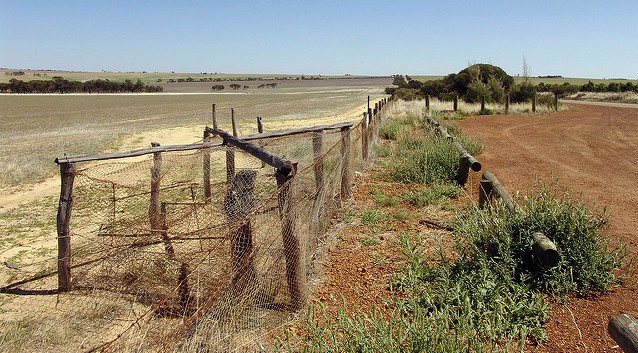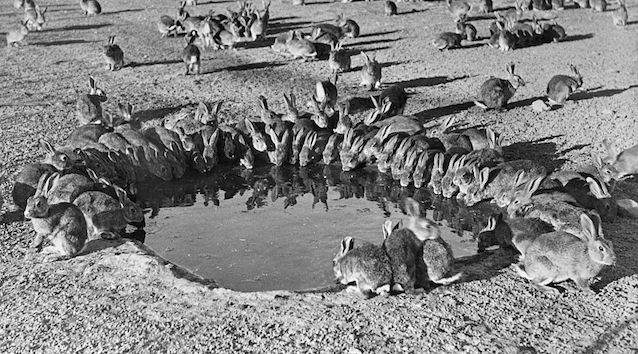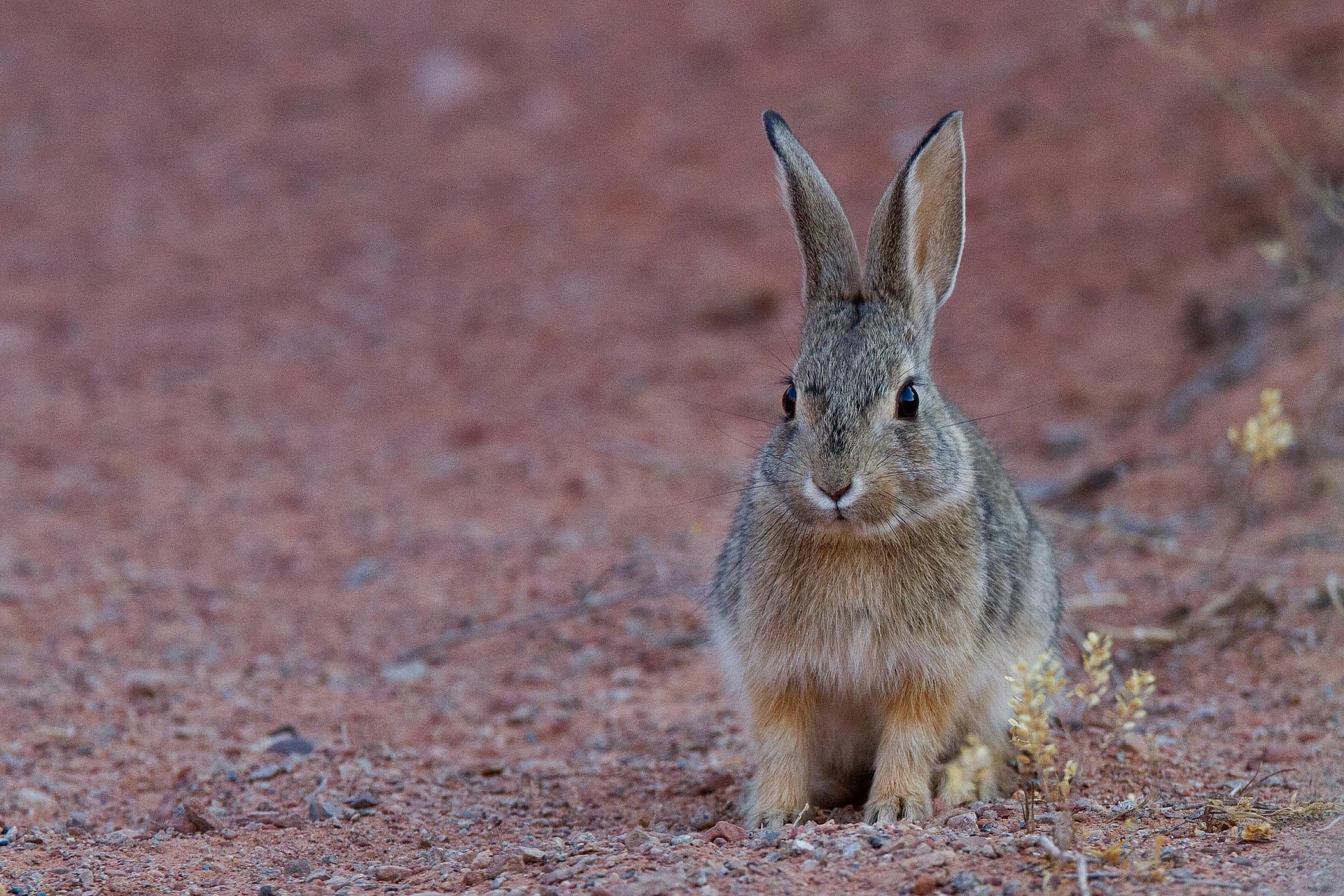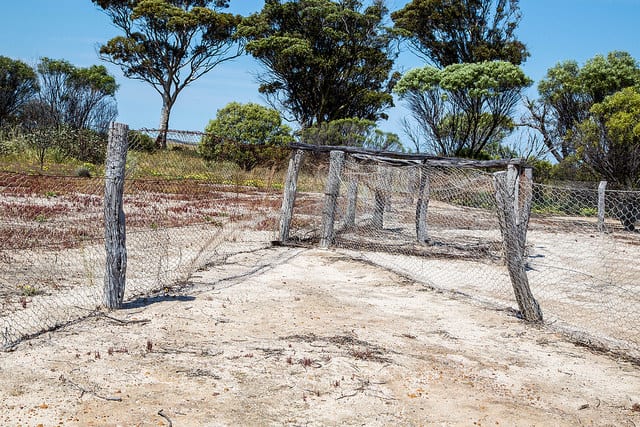AUSTRALIA
No Bunnies Allowed
By Chadd McGlone
Chapel Hill, NC, United States
When people travel to distant lands, they can sometimes feel nostalgia for what they have left behind. Early settlers in Australia experienced quite a bit of this yearning. During the mid 1800s, wealthy immigrants from Great Britain realized that they missed the pastimes of their homeland. Their desire to make their new surroundings more familiar led to such efforts as acclimatisation societies.
Missing the Bunnies
One activity they missed very much was hunting rabbits. Many immigrants who had imported domesticated rabbits tried to release them into the wild to proliferate. With their original survival instincts diluted through breeding, they failed to survive.
Then, in 1859, an English settler named Thomas Austin, a member of the Acclimatization Society of Victoria, released 24 wild rabbits to create a colony for hunting. Other settlers followed suit, and within nine years, rabbits were so plentiful that the impact of their foraging was harming property values. By 1900, rabbits were recognized as an agricultural pest.
Building a Fence
Angry at the damage caused by the rabbits, the Australian government began construction on the State Barrier Fence in order to prevent them from invading the western section of the continent. The one-meter-tall barrier, built with wooden posts and wire and completed in 1907, was the longest unbroken fence of its time. Contractors placed gates every 34 kilometers (km) in order for residents to pass from one side to the other.
And Another Fence
Unfortunately, during the six years of construction, rabbits overran both sides of the fence, forcing the construction of two additional barricades. Today, three fences prevent the rabbits from overrunning Australia:
- Fence One — 1,837 km
- Fence Two — 1,166 km
- Fence Three — 253 km
Monitoring
Since its inception, the three-part Rabbit-Proof Fence has been monitored to ensure its structural integrity. The first government-appointed manager of the fence was given the title The First Chief Inspector of Rabbits. In early years, inspectors traveled on horseback or bicycle, spending nights in rustic, permanent huts constructed along the fence line.
Today, a cooperative of government agencies shares the maintenance work. Each year, approximately 30 km of fence line is replaced with steel posts and modern, prefabricated mesh.

Unfortunate Consequences
While the fence solved one problem, it created others. Australia’s animals have enough difficulty surviving its inhospitable climate without a barrier to migration. Emus, kangaroos, snakes, and other native species have less access to their customary food sources. Also, with their populations limited geographically, their gene pools have become more restricted. The Rabbit Free Australia organization lists harm to many kinds of wildlife, as well as vegetation and agriculture.
New Strategies
Fortunately, scientists are working hard to develop alternative ways of controlling the rabbit explosion. For example, in 1950, a virus was released that reduced the number of rabbits from 600 million to 100 million within two years.

With the passage of time, however, the remaining rabbits developed partial immunity, so another virus was investigated. While this one was being tested on the Wardang Island rabbit colony, it hitched a ride to the mainland on fugitive flies. Its devastatingly effective impact there caused the government to release it widely in 1996. Scientists are currently researching a third virus that promises to add still another means of biological control.
Struggling native species show signs nowadays that they may be recovering. So, the next time you’re in Australia, enjoy the rabbits, just don’t hold the gate open for them!
Have a suggestion for this story? We’d love for you to submit it!


Blank
Blank
Slideshow
Math Resources
Learning Activities:
- Introduction to Linear Functions (Middle School)
- Fibonacci Sequence (High School)
Sample Problems:
- If the rabbit population doubles from 200 to 400 rabbits every three months, what will the population be after 15 months?
- How many total gates are there in the fences?
- Research the cost of materials for constructing a one-meter-tall fence. What would be the total cost for the three fences?
- If each gate is two meters wide, how many gates would be needed for all three fences?
- What’s the total length of all the fences?
- If 30 km are replaced each year, how many kilometers have been replaced in your lifetime? How much would that cost?
- If the rabbits reproduce at a certain percentage each year, and they are hunted each year, how long would it take to eliminate all the rabbits?
- If 30 km of fence is reconstructed every year, how long will it take to replace the whole fence?
Extension Question
What is your reaction to the issue of animal welfare in this story? These rabbits didn’t ask to be brought to Australia, so is it fair to kill so many?
Explore Further
- General information about the fence here and here
- Australian government site for updates on the fence
- Profile of Thomas Austin
- Website for Rabbit Free Australia
Share Your Story
Write your own Global Math Story and send it to us!
Sorry, the comment form is closed at this time.